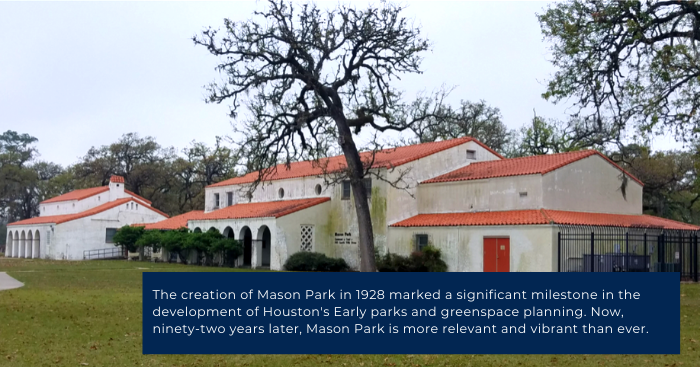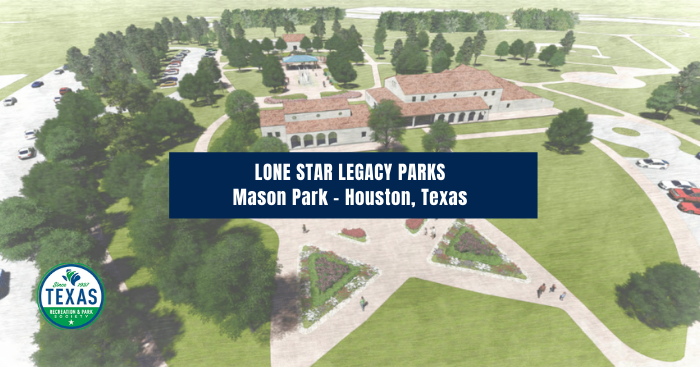Mason Park has served as an inner-city oasis for more than ninety years. The park was originally considered a “suburban” destination when it was first developed nearly five miles from downtown. The creation of Mason Park in 1928, marked a significant milestone in the development of Houston’s Early parks and greenspace planning. Now, ninety-one years later, Mason Park is more relevant and vibrant than ever.
Developed initially as Pineview Manor Park by the Houston Parks Department in 1928, the Original 32-acre park tripled in size with gift of seventy acres by Mrs. Dora Porter Mason in 1930. The gift of additional parkland was made in honor of Mrs. Mason’s deceased husband John Thomas Mason for whom the park was later renamed. Mason was a native of Lincolnshire, England, who had immigrated to Galveston, Texas as a teenager in 1872. He made a fortune in the mercantile business in Houston during the 1880’s and 1890s. He and his wife eventually retired and moved to Denver, CO, where he pursued his life-long passion for Lepidoptery, the study, and collection of butterflies and moths.

Mason Park played a significant role in the continued development of one of Houston’s first master plans. Landscape Architect, Arthur Comey, was hired by city leaders in 1912 to prepare a study of existing parks and greenspace and to make recommendations on his findings. The resulting report, “Houston, Tentative Plans for its Development,” proposed an interlinked system of natural bayou corridors that would connect with existing and future parks neighborhoods throughout the city. Mason Park was a later realized portion of Comey’s masterplan, joining Hermann, MacGregor, Memorial, Woodland, and Sam Houston parks, connecting the many bayous throughout Houston.
Historic Mason Park is surrounded by Pre-War neighborhoods developed during the 1910s–1940s. Although there are no officially designated historic districts in the area, there is great potential for historic recognition of these neighborhoods should residents choose to pursue historic designation. In 1971, nearby residents formed the East Lawndale Civic Association, which has long been an advocate for Mason Park. The group has been an active participant in the Capital Improvement Project process, which helps to identify needed park upgrades and other community improvements. The Civic Association has also been supportive of past and future Parks Department initiatives for the Park like the development of the Mason Park Master Plan, installation of historic lighting at the Mason Park Gazebo and plans to rebuild and to raise the height of the South 75th Street Bridge to connect segments of the Brays Bayou Hike and Bike Trail.

Now, at the age of ninety-one, Mason Park continues to figure prominently in the health and vibrancy of the historic neighborhoods which surround it. The park’s natural beauty and wide array of amenities offer a great deal to East End residents and the surrounding communities, and create lasting impact to the heart of this community.
Learn more about the Lone Star Legacy Award Applications.

